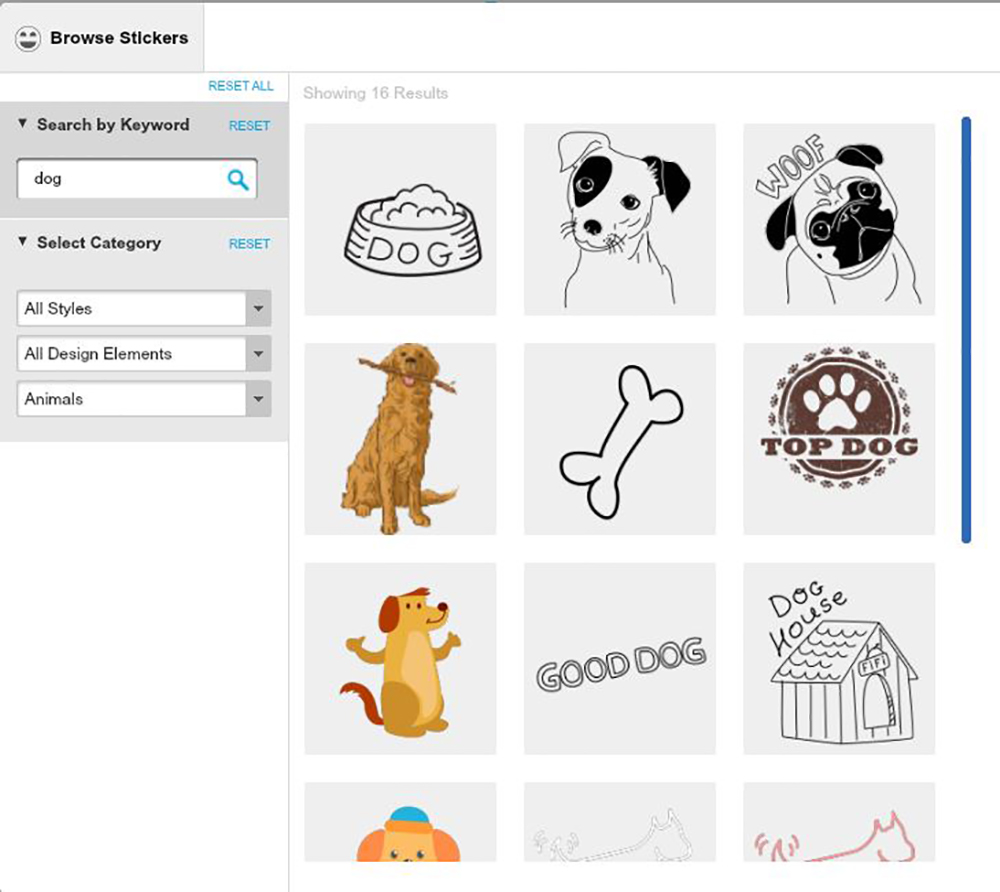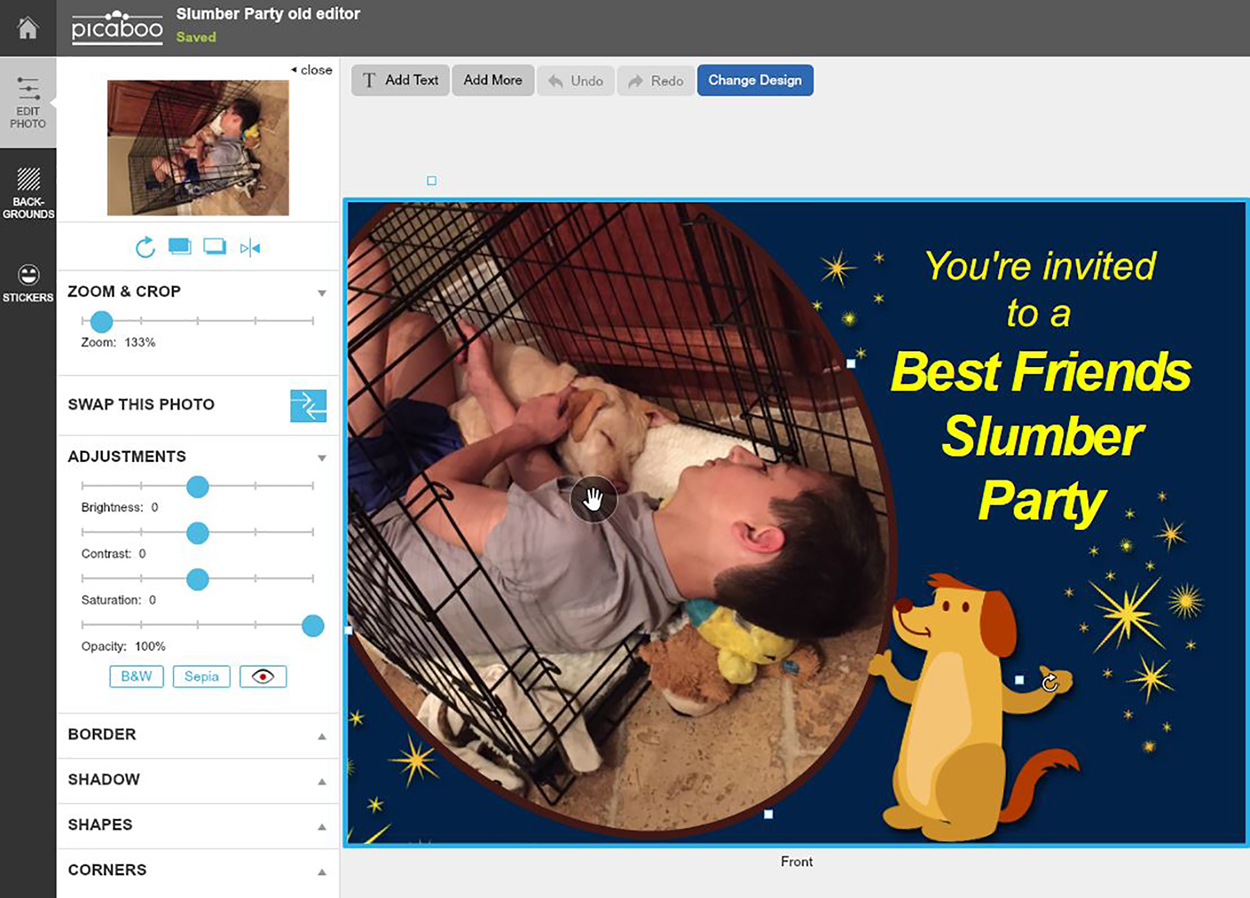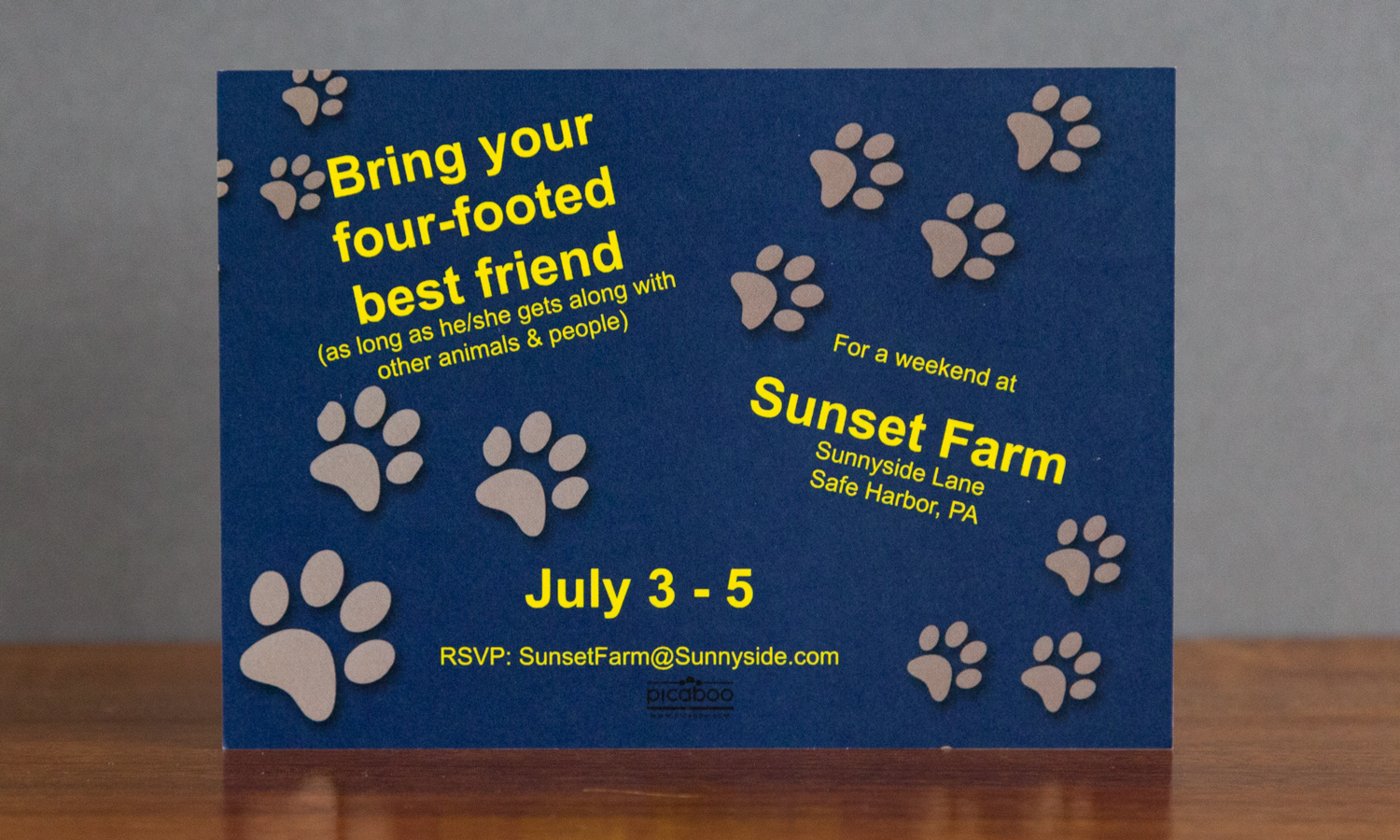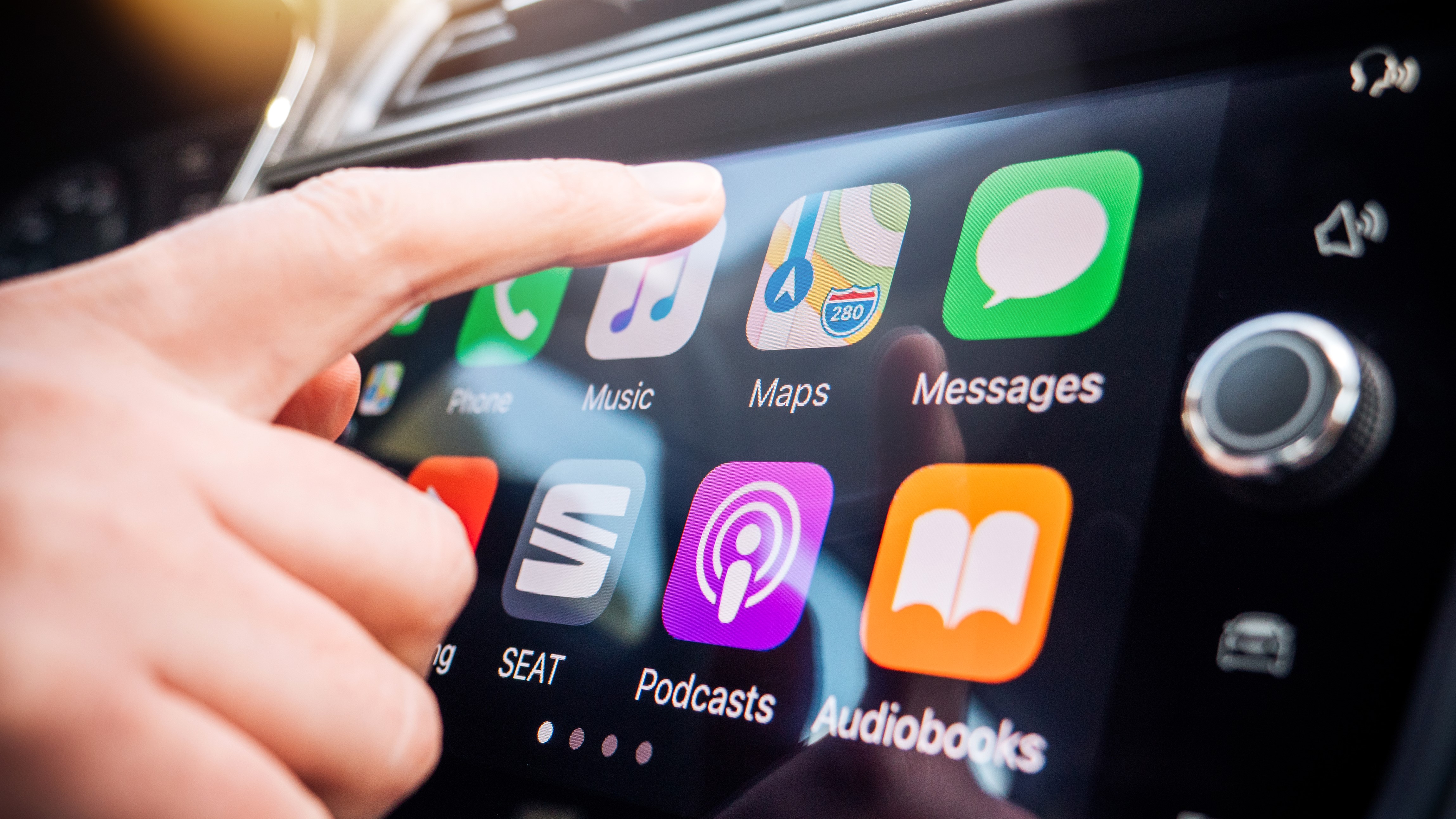Tom's Guide Verdict
Picaboo's postcard-project software is a close rival to Mixbook's in terms of flexibility, creativity and intelligence. If only Picaboo's print and photo quality were better.
Pros
- +
Intelligent, fun software
- +
Great search engine for clip art
- +
Templates are fully editable
- +
Nice image adjustments apply to clip art & photos
Cons
- -
Limited backgrounds
- -
Disappointing print and photo quality
- -
Expensive prints
Why you can trust Tom's Guide
Picaboo's intelligent, flexible software makes creating a postcard fun, while providing a great range of creative tools and options for a fully customizable, highly personal design. Unfortunately, the quality of our printed party invitation card didn't measure up to the software.
Specs
Import photos from: Facebook, Google Drive, Google Photos, Dropbox or your device
Templates & layouts: Templates fully editable; layouts unnecessary, because you can drag and drop elements anywhere onto your postcard
Backgrounds: Limited
Clip art: Large, attractive library with an excellent search engine
Text: Fully customizable
Creating Your Card
Picaboo has a large, well-organized library of fully editable postcard templates. To help you choose your template, you can upload your own photo to preview how it would look in all the available designs.
MORE: The Best Photo Card Services
Unlike the other print services, Picaboo doesn't have any postcard layout options beyond the template choice. And it doesn't need them. Simply drag and drop photos or clip art onto the postcard. Text is similarly very easy to place anywhere on your postcard design. All text blocks, photos and clip art can be interactively resized, moved or rotated.

Picaboo also has a very convenient image-adjustment tab that can be used for not only photos but also clip art. Here, you can use sliders for brightness, contrast, saturation and opacity, plus buttons to apply the B&W or Sepia filter. You have lots of control over photo borders, with a slider for thickness and a full-spectrum color picker.

Picaboo also has cutouts to shape photos as hearts, stars or ovals/circles. (The only other service in this roundup that has cutouts is Mixbook.) However, the drop shadow is fixed and works only on photos and clip art, not text.
The large selection of clip art is attractive (though not as appealing as Mixbook's), and it's well-organized, including an excellent and easy-to-use search engine. Unfortunately, Picaboo's postcard project offers only solid-color backgrounds unless you start with a template that has a background you want to use.
The Printed Card
Our Picaboo printed postcard is very disappointing. Its colors were dull and muted, with no sparkle.

The photo was underexposed, with a red color shift and soft focus. The type was clean and smooth, but not crisp. While the card stock is an acceptable weight, its soft surface quickly developed visible scratches that detracted from the overall impression.
Price & Options
Our 5 x 7-inch Picaboo postcard was rather pricey, at $1.90 each for 10 cards. The price goes down as soon as you increase the quantity you buy. For instance, 20 cards cost $1.89 each, and 500 are $1.29 each. By comparison, Mixbook (our favorite postcard service) charges $1.15 per card for an order of 100, and GotPrint charges 26.4 cents each for 100 cards.

You can upgrade the paper to a thicker, archival card stock for 30 cents extra per postcard, regardless of the quantity ordered. Blank envelopes are included. Envelopes with your printed return address cost 29 cents each.
Picaboo's other photo products include photo books, calendars, phone and tablet cases, photo panels, school yearbooks, prints, and posters.
Bottom Line
Credit: Tom's Guide
Sally Wiener Grotta is the president and lead analyst of DigitalBenchmarks test lab (www.DigitalBenchmarks.com). The scripts she created for various tech publications for testing and evaluating digital cameras, image quality, software and related technologies have become industry standards. Among her numerous books is the first major volume on image processing “Digital Imaging for Visual Artists” (McGraw-Hill), co-authored with Daniel Grotta. Her hundreds of reviews, stories and columns have appeared in scores of magazines, journals and online publications.

